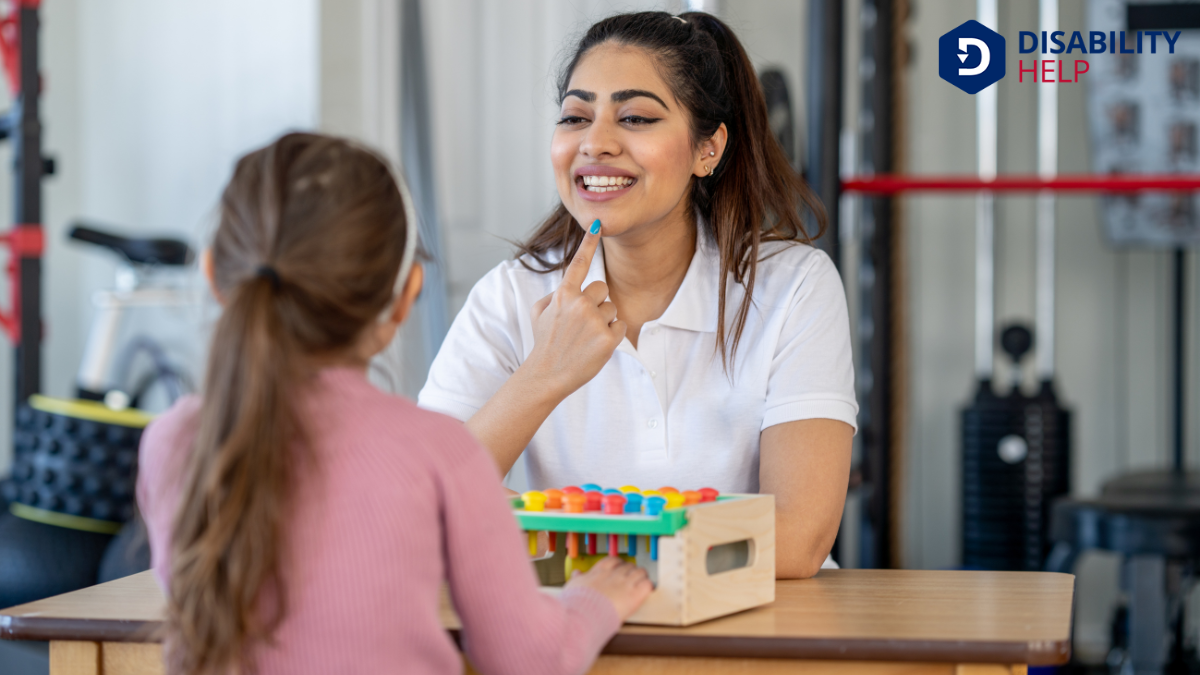When we talk about assistive technology, we're diving into a world of innovation aimed at supporting individuals with disabilities. These tools range from simple, like magnifying glasses, to sophisticated, such as motorized wheelchairs. They enhance communication, mobility, sensory experiences, and cognitive function. As we explore these advancements, we'll uncover how they empower independence and inclusionThe practice of creating environments in which any individual or group can be and feel welcomed, res..., providing essential support across various aspects of life. Curious about the specifics? Let's begin this enlightening journey together.
Key Takeaways
- Assistive technology includes tools and devices enhancing capabilities for individuals with disabilities.
- It ranges from simple aids like magnifying glasses to complex systems such as motorized wheelchairs.
- Communication aids, such as speech-generating devices, bridge speech and language gaps.
- Mobility solutions, including wheelchairs and scooters, enhance physical independence.
- Sensory aids address vision and hearing challenges, improving access to informationThe right of individuals with disabilities to obtain and use information, often requiring accessible....
Understanding the Scope of Assistive Technology
Assistive technology encompasses a wide range of tools and devices designed to enhance the capabilities of individuals with disabilities. We might wonder, what exactly falls under this category? From simple aids like magnifying glasses to complex systems like motorized wheelchairs, assistive technology includes anything that supports independence and improves quality of life.
It's not just about mobility; it covers various areas such as learning, hearing, and vision.
We can consider assistive technology as an enabler, opening doors to opportunities we might think are out of reach. These tools empower people to perform daily tasks, engage with their communities, and pursue their interests.
Understanding its scope helps us appreciate its impact, highlighting the importance of access and customization to meet individual needs.
Communication Aids: Bridging Speech and Language Gaps

Let's explore how communication aids, like speech generating devices and augmentative communication tools, help bridge the gaps in speech and language.
These technologies empower individuals who face challenges in verbal communication, providing them with a voice and a means to express their thoughts and needs.
Speech Generating Devices
While maneuvering through the complexities of communication, many of us have encountered situations where words fail us or others. In these moments, speech generating devices (SGDs) can be invaluable.
These devices serve as a voice for those who struggle to speak due to conditions like ALSAmyotrophic Lateral Sclerosis, a progressive neurodegenerative disease affecting nerve cells in the ..., cerebral palsy, or autism. SGDs convert text or symbols into spoken words, bridging gaps and fostering connection. They empower users to express thoughts, needs, and feelings, enhancing autonomy and participation in daily life.
As we explore these tools, it’s essential to understand their impact: they don’t just offer words, they provide a lifeline of interaction and engagement. By embracing SGDs, we’re embracing inclusivity, ensuring everyone can communicate effectively and be heard.
Augmentative Communication Tools
Communication is a fundamental aspect of human interaction, yet for many, it presents significant challenges. We all deserve the ability to express ourselves, which is where augmentative communication tools come into play.
For those who struggle with speech and language, these tools bridge gaps and enhance communication. Let’s explore what they offer:
- Picture Boards: Simple yet effective, these boards use images to represent words and concepts, allowing users to select what they want to convey.
- Speech Apps: Apps on tablets or smartphones convert text or symbols into speech, providing a voice to those who need it.
- Communication Books: Personalized books filled with symbols or words tailored to individual needs.
- Eye-Tracking Devices: Advanced technology that enables individuals to communicate using eye movements.
Mobility Solutions: Enhancing Physical Independence
As we explore mobility solutions, we’re diving into a world where technology greatly enhances physical independence for those with mobility challenges.
Wheelchairs, walkers, and scooters are just the beginning. These devices empower individuals to navigate their environments with ease and confidence. Innovations like power chairs and stair lifts guarantee that physical barriers don’t limit our freedom.
We’re talking about solutions that adaptA grassroots disability rights organization in the U.S. that focuses on promoting community-based se... to our needs, from lightweight designs for easy transport to advanced control systems for personalized movement. Technology is a bridge, transforming daily life and providing autonomy.
Let’s appreciate the role of these tools in fostering independence and improving quality of life. Together, we can understand how these advancements support those who face mobility challenges, promoting inclusion and accessibilityThe design of products, devices, services, or environments to be usable by people with disabilities.....
Sensory Aids: Addressing Vision and Hearing Challenges
Steering through the world with impaired vision or hearing presents unique challenges, but sensory aids are stepping up to bridge the gap.
These technologies offer us practical solutions to improve daily experiences and guarantee independence. Let’s explore how they work:
- Vision Aids: Devices like magnifiers, screen readers, and text-to-speech converters help individuals with visual impairments access information and navigate their environment more easily.
- Hearing Aids: These devices amplify sound, making conversations and environmental sounds more accessible to those with hearing lossPartial or total inability to hear sounds in one or both ears..
- Alerting Devices: Vibrating alarms or flashing lights alert users to important sounds, like doorbells or smoke alarms.
- Captioning Services: Subtitles for videos and live events allow those with hearing difficulties to enjoy and participate fully.
Together, these aids enhance our sensory experiences and improve quality of life.
Cognitive Support: Tools for Learning and Memory

When it comes to enhancing our mental capabilities, cognitive support tools are invaluable allies in our learning and memory journeys. They help us organize information, manage time, and retain knowledge more effectively.
These tools include apps and devices designed to aid our focus, comprehension, and memory retention. For instance, digital calendars and reminders keep us on track with tasks and appointments, while note-taking apps help capture essential information instantly.
We can also benefit from tools like mind-mapping software, which simplifies complex ideas by visually organizing them. Memory games and brain-training apps enhance our cognitive skills through engaging exercises.
Adaptive Equipment for Daily Living Activities
Maneuvering daily life with ease is possible thanks to adaptive equipmentDevices that assist individuals with disabilities in performing ADLs, such as grab bars or shower ch... designed for various living activities.
Let's explore some essential tools that enhance our independence and comfort:
- Reachers: These handy tools help us grab items from high shelves or low spaces without straining ourselves.
- Button hooks: Perfect for those with limited dexterity, these devices make buttoning shirts a breeze.
- Shower chairs: They provide stability and safety, allowing us to bathe without the fear of slipping.
- Jar openers: These assistive devices help us open stubborn lids, making meal preparation simpler.
The Role of Assistive Technology in Education and Employment
Although often overlooked, assistive technology plays a pivotal role in both education and employment, empowering individuals to overcome barriers and achieve their full potential.
In classrooms, these tools help students with disabilities access the same curriculum as their peers. For example, speech-to-text software allows those with dyslexiaA learning disorder characterized by difficulty reading due to problems identifying speech sounds an... to express their thoughts more easily, while screen readers open digital content to visually impaired students.
In the workplace, assistive technology levels the playing field. We can use specialized keyboards or voice recognition software to enhance productivity and communication.
These tools offer us the flexibility to perform tasks that might otherwise be challenging. By integrating assistive technology, we create inclusive environments where everyone has the opportunity to contribute their skills and talents, driving success and innovation.
Conclusion
In exploring the vast world of assistive technology, we’ve seen how it transforms lives by bridging communication gaps, enhancing mobility, and supporting sensory and cognitive challenges. Whether it’s in education, employment, or daily living, these tools empower individuals to achieve greater independence and inclusion. Let’s continue to advocate for access and customization, ensuring that everyone can benefit from these innovations. Together, we can foster a more inclusive society where everyone thrives.






